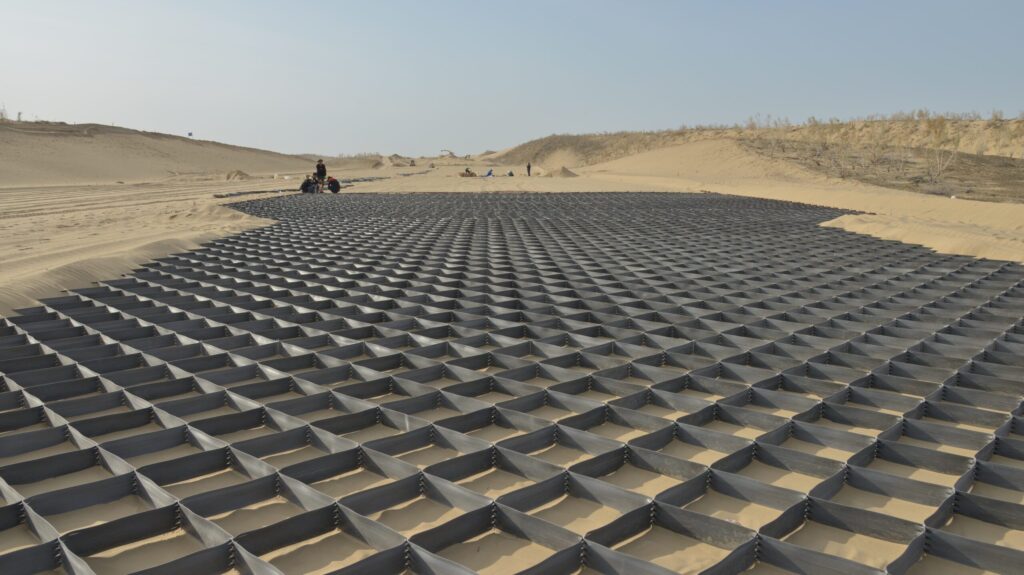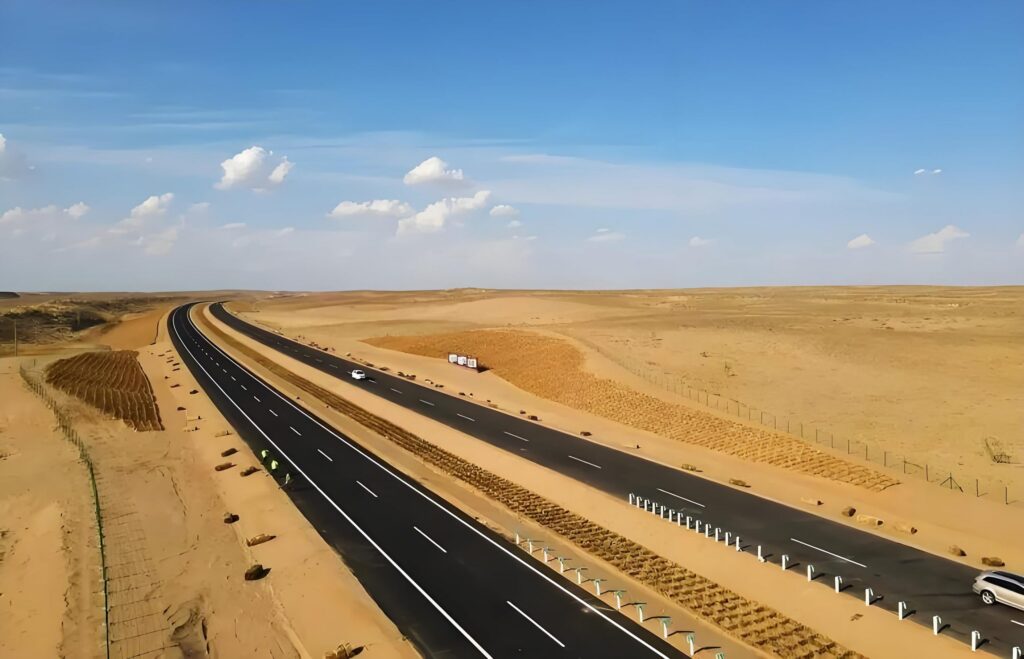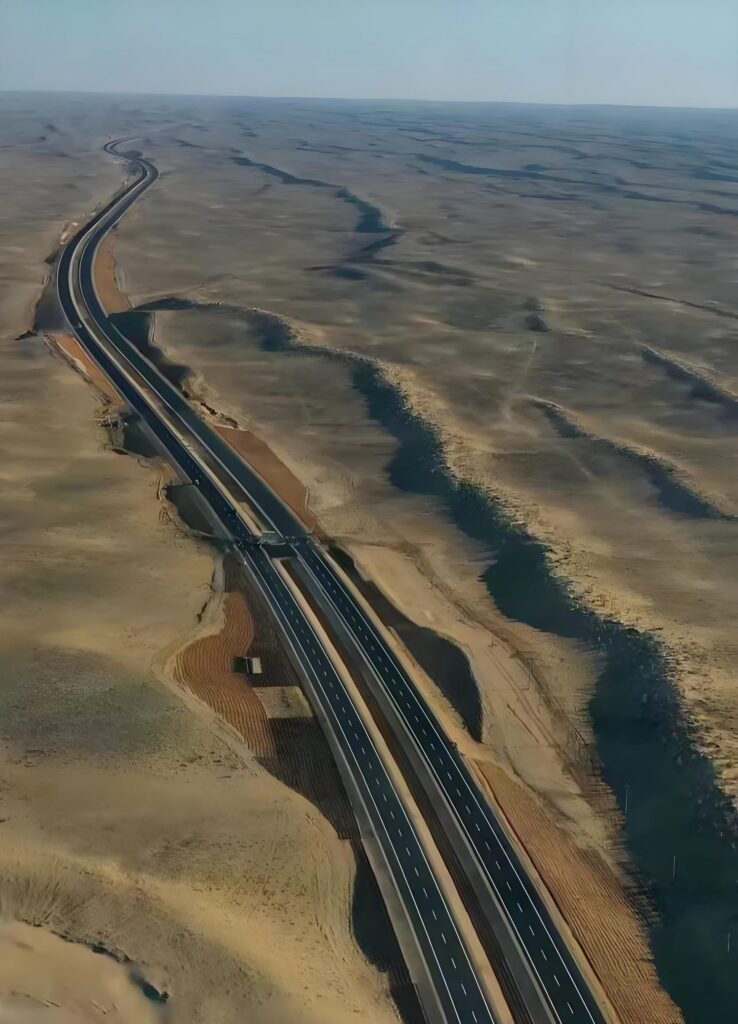Deke International recently received the Advanced Textiles Association’s (ATA) International 2024 Achievement Award of Excellence in the Geosynthetics Project – Transportation category for its Silk Road construction project.

The Ancient Silk Road began in the 2nd century BC. It starts from Chang’an, the capital of the Western Han Dynasty, passes through the Hexi Corridor and the present-day Xinjiang region, reaches Central Asia, West Asia, and extends to Europe. It is more than 7,000 kilometers long, about 4,000 kilometers in China, and is the longest land route for world business. It enabled the goods exchanges between China and Central Asia, West Asia and Europe, which have gradually increased, promoting economic and cultural exchanges between the East and the West for thousands of years.
However, the route also needs upgrades to facilitate better trade and communication nowadays. In order to optimize the New Silk Road Economic Belt, challenges of construction needed solutions. The Silk Road Economic Belt has a vast territory and is rich in natural, mineral, energy, land and tourism resources. However, the transportation in this area is not convenient and the natural environment is relatively poor, and there is a huge gap between the economic development and the economic circles at both ends. The entire region has a phenomenon of “high on both sides and low in the middle.”

The S21 Expressway (from Altay to Urumqi) has a total length of 342.538km. It is the first desert expressway in Xinjiang. It passes from north to south through the Gurbantünggüt Desert. It is an important part of the middle channel and the north channel of the transportation hub in the core area of the Silk Road Economic Belt. Its completion has opened up the business channel with Northern Xinjiang and Urumqi, shortened the distance between regions, and improved regional transportation conditions. There will no longer be a detour from Urumqi to the Altay area, which can save 260km of driving. It is an important part of the Silk Road skeleton road network.
The Gurbantünggüt Desert is the largest fixed and semi-fixed desert in China, which dune types are mainly sand ridges. Without viscidity, Aeolian sand has basically zero cohesion, and is highly loose. Its height ranges from 10 to 50 meters. The Gurbantünggüt Desert’s terrain is uneven, which is higher in the south and lower in the north. Extreme high temperatures can reach over 40 degrees in summer and extreme low temperatures can reach below -40 degrees in winter. There are five months where the average temperature is below 0 degrees.

Considering the special natural environment of the desert area and the difficulty of construction, in order to achieve the purpose of using local materials for the desert highway, improving the overall stability of the roadbed, saving costs, reaching environmentally friendly and rapid construction, Deke International independently developed, designed and produced the construction technology called Cyclic Pre-tensioning Paving of Ultra-wide 19-meter Integral Plug-in-welded Geocell.
The plug-in-welded geocell uses high-strength PP material tensile process geotechnical format strips. The entire set of formats is woven through a loop of strips. The format nodes are welded through the open ends of the plug-in connectors to form an overall cell product, which has the overall consistency and the characteristics of high strength and low elongation of cell strips and nodes. The mechanical cyclic tensioning laying process can reduce the labor required for traditional manual tensioning construction and reduce manpower by more than 10 people. At the same time, it can meet the mechanical synchronous construction progress requirements of the working surface.
The design of the plug-in-welded geocell meets the reinforcement performance requirements for unfavorable soil. Combined with the Cyclic Pre-tensioning Paving of Ultra-wide 19-meter Integral Plug-in-welded Geocell, it shortens the construction time and difficulty, and solves the problems that often occur in the traditional pave process, including a long construction period, low efficiency, and poor paving effect. It also effectively solves the problems of projects with harsh environment and difficult construction conditions of building transportation facilities in high deserts, further reducing construction costs and increased pavement load-bearing life.
As the central channel of the transportation hub in the core area of the Silk Road Economic Belt, S21 will facilitate the Silk Road Economic Belt to keep on blooming to making important contributions for economic, cultural and technological communications between the East and the West. Geosynthetic products and solutions like the plug-welded geocell will keep on being one of the anonymous heroes who always shoulders the heavy responsibility to make a better world for us all.
Project Details
Fabric 1
Plug-in-welded geocells
Producer/Manufacturer: Deke International
Primary Use: Main Fabric
Engineer Name 1
Yongkong Wei, Sophia Dong
Engineer Company 1
Deke International
Design Name
Yongkong Wei
Design Company
Deke International
Content is submitted by the participant. ATA is not responsible for the content descriptions of the IAA award winners.
To explore all the 2024 International Achievement Awards Winners entries and read detailed project descriptions , click here. You can also see the IAA Geosynthetic Projects winners here.
 TEXTILES.ORG
TEXTILES.ORG


